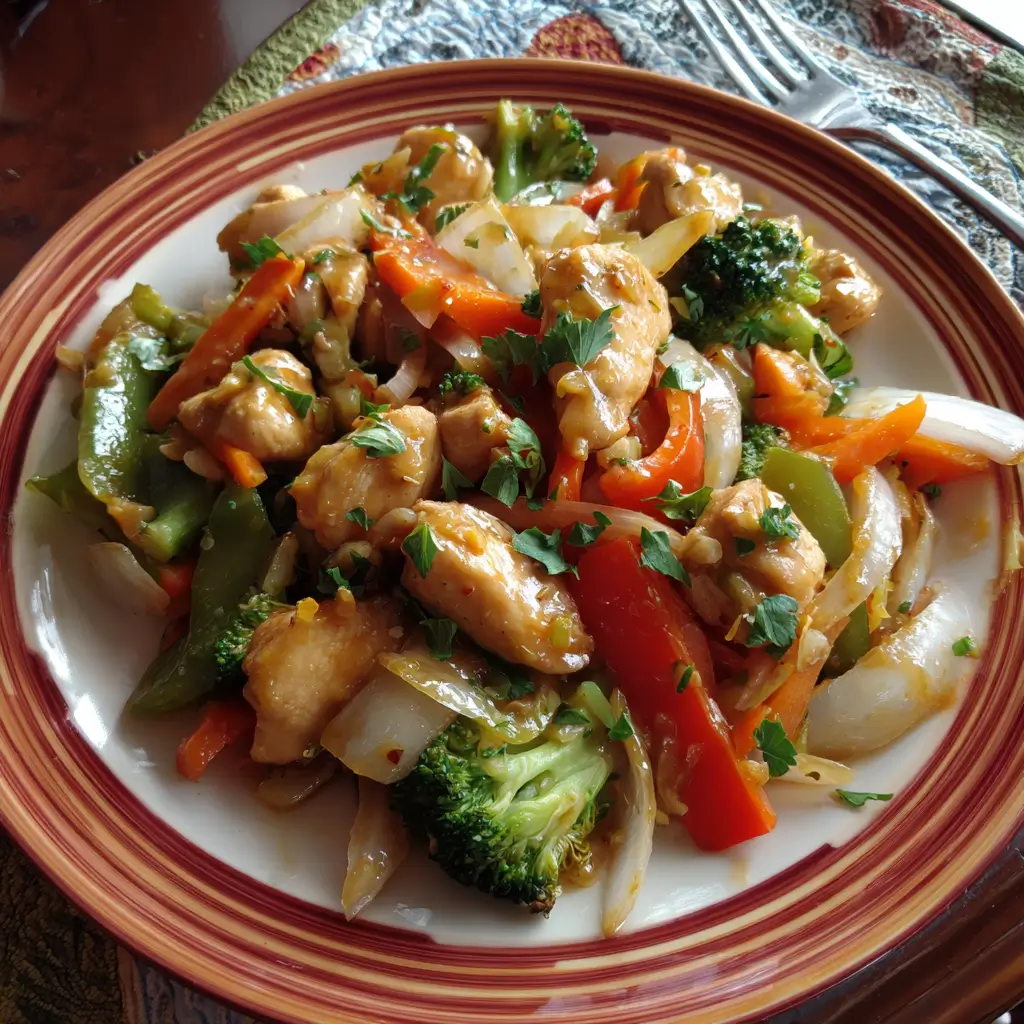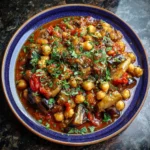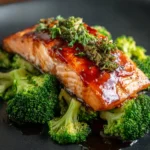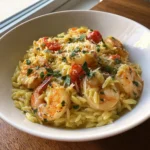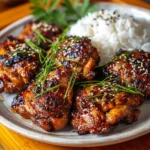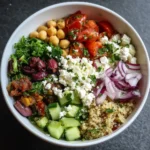Thai Peanut Chicken Stir Fry: A Flavorful Journey Through Southeast Asia
The Thai Peanut Chicken Stir Fry is a vibrant, aromatic dish that captures the essence of Thai cuisine—bold flavors, balanced textures, and an intricate harmony of sweet, sour, salty, and spicy. While not traditionally found in every Thai household as a classic regional recipe, this stir fry has become immensely popular worldwide due to its accessibility, ease of preparation, and irresistible taste. It draws inspiration from various elements of Thai cooking, particularly the use of peanut sauce in dishes like satay and the incorporation of fresh herbs, chilies, and fermented seasonings such as fish sauce. Over time, especially in Western adaptations, the dish evolved into a fusion favorite, combining authentic Thai ingredients with global stir-fry techniques.
The History of Thai Peanut Chicken Stir Fry
Though modern in origin compared to ancient Thai recipes, the roots of Thai Peanut Chicken Stir Fry can be traced back to the broader culinary traditions of Thailand, where peanuts have long been used in both savory and sweet preparations. Peanuts were introduced to Southeast Asia through trade routes from South America during the Columbian Exchange and quickly became integrated into local cuisines. In Thailand, they are commonly ground into sauces for satay (grilled meat skewers), used in curries, or sprinkled over salads and noodle dishes for added crunch and richness.
The stir-fry method itself is influenced by Chinese cooking techniques, which were brought to Thailand centuries ago by immigrants from southern China. Wok cooking, high heat, and quick frying became staples in Thai kitchens, especially in urban centers like Bangkok. The combination of these Chinese methods with native Thai ingredients gave rise to numerous hybrid dishes, including what we now know as Thai Peanut Chicken Stir Fry.
In the late 20th century, as international interest in Asian cuisine grew, chefs and home cooks began experimenting with simplified versions of exotic dishes. Thai restaurants outside of Thailand started offering “peanut chicken” stir fries on their menus, often tailored to suit milder Western palates. This led to the widespread popularity of the dish in North America, Australia, and Europe, where it remains a staple comfort food with an exotic flair.
Ingredients Breakdown: What Makes This Dish Shine
The magic of Thai Peanut Chicken Stir Fry lies in its complex yet approachable flavor profile, achieved through a carefully curated blend of ingredients:
- Chicken Breast or Thighs: Lean chicken breast offers a clean protein base, while thigh meat provides more juiciness and depth of flavor due to its higher fat content.
- Peanut Butter: Natural, unsweetened peanut butter forms the creamy backbone of the sauce. Opt for smooth varieties unless you enjoy texture, but avoid brands with excessive sugar or hydrogenated oils.
- Fresh Garlic and Ginger: These aromatics add warmth and pungency, essential for building layers of flavor.
- Soy Sauce or Tamari: Provides umami and saltiness. Tamari is a gluten-free alternative with a richer, smoother taste.
- Fish Sauce: A quintessential Thai ingredient that enhances savoriness without making the dish taste fishy when used appropriately.
- Rice Vinegar or Lime Juice: Adds brightness and acidity to balance the richness of the peanut sauce.
- Coconut Milk or Broth: Thin coconut milk helps emulsify the sauce and adds subtle sweetness; broth can be used as a lighter substitute.
- Brown Sugar or Honey: A touch of sweetness rounds out the flavors and complements the nuttiness.
- Chili Flakes or Sriracha: Introduces heat—adjustable based on preference. Fresh red chili peppers can also be used for authenticity.
- Vegetables: Bell peppers, broccoli, snap peas, carrots, mushrooms, and baby corn are common choices, adding color, nutrients, and crunch.
- Cooking Oil: High smoke-point oils like peanut, avocado, or vegetable oil work best for stir-frying.
- Garnishes: Chopped roasted peanuts, fresh cilantro, sliced green onions, and lime wedges elevate the final presentation and freshness.
Step-by-Step Recipe: How to Make Authentic-Tasting Thai Peanut Chicken Stir Fry at Home
Follow this detailed guide to create a restaurant-quality Thai Peanut Chicken Stir Fry in your own kitchen:
- Prep Your Ingredients: Begin by slicing 1 lb (450g) of boneless, skinless chicken into thin strips. Cut your vegetables uniformly so they cook evenly—slice bell peppers, chop broccoli into small florets, julienne carrots, and halve snap peas if desired.
- Make the Peanut Sauce: In a medium bowl, whisk together:
- ¼ cup natural creamy peanut butter
- 3 tbsp soy sauce (or tamari)
- 2 tbsp rice vinegar or freshly squeezed lime juice
- 1 tbsp fish sauce
- 1 tbsp brown sugar or honey
- 1 tsp sesame oil (optional, for depth)
- 1 clove garlic, minced
- 1 tsp grated fresh ginger
- ½ tsp crushed red pepper flakes (adjust to taste)
- ⅓ cup coconut milk or low-sodium chicken broth
Mix until smooth and creamy. Set aside.
- Marinate the Chicken (Optional): For enhanced flavor, toss the chicken strips with 1 tablespoon of the prepared sauce and let sit for 15–30 minutes while prepping other components.
- Stir-Fry the Chicken: Heat 1 tablespoon of oil in a large wok or non-stick skillet over high heat. Add the chicken in a single layer and sear for 3–4 minutes per side until golden and cooked through. Remove and set aside.
- Cook the Vegetables: In the same pan, add another teaspoon of oil if needed. Toss in harder vegetables first (like carrots and broccoli) and stir-fry for 2–3 minutes. Then add softer ones (bell peppers, snap peas, mushrooms) and continue cooking for another 2–3 minutes until crisp-tender.
- Combine Everything: Return the chicken to the pan. Pour the peanut sauce over the mixture and stir well to coat all ingredients. Reduce heat to medium-low and simmer gently for 2–4 minutes, allowing the sauce to thicken slightly and cling to the food.
- Taste and Adjust: Sample the dish and adjust seasoning as needed—add a splash more lime juice for tang, a pinch of sugar for sweetness, or extra chili for heat.
- Serve Immediately: Plate the stir fry over steamed jasmine rice, brown rice, quinoa, or cauliflower rice for a lower-carb option.
- Garnish Generously: Top with chopped roasted peanuts, fresh cilantro leaves, sliced green onions, and serve with lime wedges on the side for squeezing.
Tips for Perfect Thai Peanut Chicken Stir Fry Every Time
- Don’t Overcook the Chicken: Cook just until no longer pink to prevent dryness. If using breast meat, consider pounding it slightly for even thickness.
- Use High Heat: Stir-frying requires intense heat to achieve the signature smoky flavor (wok hei) and prevent soggy vegetables.
- Prep Ahead: Mise en place is crucial. Have all ingredients chopped, measured, and within reach before turning on the stove.
- Thicken the Sauce: If the sauce seems too runny, mix 1 tsp cornstarch with 1 tbsp cold water and stir it into the simmering mixture. Alternatively, reduce longer over low heat.
- Avoid Clumpy Peanut Butter: Warm the peanut butter slightly or use room temperature liquids when mixing the sauce to ensure smooth blending.
- Balance Flavors: Taste constantly. The ideal sauce should be rich, slightly sweet, tangy, salty, and spicy—all in harmony.
- Reserve Some Garnishes: Adding fresh herbs and peanuts after cooking preserves their texture and aroma.
- Double the Sauce (Optional): Many people love extra sauce for drizzling or dipping. Consider making 1.5x the amount and storing leftovers separately.
Variations and Customizations: Make It Your Own
This versatile dish lends itself beautifully to personalization. Here are some creative twists to explore:
- Protein Swaps: Replace chicken with shrimp, tofu, tempeh, thinly sliced beef, or pork. For seafood lovers, scallops or squid work wonderfully.
- Vegan Version: Use tofu or chickpeas instead of chicken, swap fish sauce for soy sauce or vegan “fish” sauce, and ensure peanut butter is free of honey.
- Noodle Integration: Turn it into a peanut noodle bowl by serving over rice noodles, udon, or soba. Toss the noodles directly into the sauce for maximum flavor absorption.
- Dietary Adaptations: Gluten-free? Use tamari and check labels on peanut butter and sauces. Low-sugar? Substitute monk fruit syrup or omit sweeteners entirely.
- Extra Veggies: Try bok choy, zucchini, cabbage, spinach, water chestnuts, or bamboo shoots for variety.
- Spice Level Control: Mild version? Skip chili flakes. Want fire? Add diced Thai bird’s eye chilies or a spoonful of chili garlic paste.
- Herb Twists: Mint, Thai basil, or even parsley can complement or replace cilantro for different herbal notes.
- Curry-Inspired: Stir in 1 tsp red or green curry paste for a deeper, spicier dimension.
Health Considerations and Nutritional Value
When prepared mindfully, Thai Peanut Chicken Stir Fry can be both delicious and nutritious. Here’s a breakdown of its health aspects:
- Protein-Rich: Chicken provides lean protein essential for muscle repair and satiety. Tofu and legumes offer plant-based alternatives.
- Healthy Fats: Peanuts contain monounsaturated and polyunsaturated fats, which support heart health. However, portion control matters due to calorie density.
- Fiber & Vitamins: A colorful array of vegetables contributes dietary fiber, antioxidants, vitamin C, vitamin A, and folate.
- Sodium Watch: Soy sauce and fish sauce are high in sodium. To reduce intake, opt for low-sodium versions and balance with fresh ingredients.
- Sugar Content: Some recipes call for significant sugar or sugary peanut butters. Using natural sweeteners in moderation keeps blood sugar levels stable.
- Calorie Awareness: The peanut sauce can be calorie-dense. Serving over cauliflower rice or increasing vegetable-to-sauce ratio makes it lighter.
- Allergen Alert: Contains peanuts—a major allergen. Always label accordingly when serving others. Sunflower seed butter may be a safe substitute, though flavor will differ.
On average, one serving (about 1.5 cups over rice) contains approximately:
- Calories: 450–600 kcal (varies by ingredients and portions)
- Protein: 30–35g
- Fat: 20–25g (mostly unsaturated)
- Carbohydrates: 30–40g
- Fiber: 5–7g
- Sodium: 800–1200mg (can be reduced with mindful prep)
Complete Ingredient List
For the Stir Fry:
- 1 lb (450g) boneless, skinless chicken breasts or thighs, thinly sliced
- 2 tbsp neutral oil (peanut, avocado, or vegetable), divided
- 1 red bell pepper, sliced
- 1 cup broccoli florets
- ½ cup sliced carrots
- ½ cup sugar snap peas
- ½ cup sliced mushrooms (shiitake or button)
- 2 cloves garlic, minced
- 1-inch piece fresh ginger, grated
For the Peanut Sauce:
- ¼ cup natural creamy peanut butter (unsweetened)
- 3 tbsp soy sauce (or tamari for gluten-free)
- 2 tbsp rice vinegar or lime juice
- 1 tbsp fish sauce (substitute soy sauce for vegetarian)
- 1 tbsp honey or brown sugar
- 1 tsp sesame oil (optional)
- ½ tsp crushed red pepper flakes (adjust to taste)
- ⅓ cup light coconut milk or chicken broth
For Serving:
- Cooked jasmine rice, brown rice, or cauliflower rice
- Chopped roasted peanuts
- Fresh cilantro leaves
- Sliced green onions
- Lime wedges
Detailed Directions
- Prepare All Ingredients: Slice chicken and vegetables. Measure out all sauce ingredients and keep them ready near the stove.
- Whisk the Sauce: In a bowl, combine peanut butter, soy sauce, rice vinegar, fish sauce, honey, sesame oil, garlic, ginger, chili flakes, and coconut milk. Whisk until completely smooth. Set aside.
- Cook the Chicken: Heat 1 tbsp oil in a large wok or skillet over high heat. Add chicken in a single layer and cook 3–4 minutes per side until browned and cooked through. Transfer to a plate.
- Stir-Fry Vegetables: Add remaining oil to the pan. Sauté garlic and ginger for 15 seconds until fragrant. Add carrots and broccoli first; stir-fry 2 minutes. Then add bell pepper, snap peas, and mushrooms; cook 2–3 minutes more until tender-crisp.
- Combine and Simmer: Return chicken to the pan. Pour in the peanut sauce and stir thoroughly. Bring to a gentle simmer and cook 2–3 minutes, stirring frequently, until heated through and sauce thickens slightly.
- Adjust Seasoning: Taste and modify—add more lime juice for acidity, honey for sweetness, or chili for heat.
- Serve Hot: Spoon over warm rice. Garnish with peanuts, cilantro, green onions, and lime wedges.
- Enjoy Immediately: Best served fresh, though leftovers can be refrigerated for up to 3 days.
Frequently Asked Questions (FAQ)
Can I make this ahead of time?
Yes! You can prep the sauce and chop ingredients up to 2 days in advance. Store separately in airtight containers. Assemble and cook just before serving for best texture.
How do I store leftovers?
Keep in a sealed container in the refrigerator for up to 3–4 days. Reheat in a skillet over medium heat with a splash of water or broth to loosen the sauce.
Can I freeze Thai Peanut Chicken Stir Fry?
It’s possible, but the texture of vegetables may soften upon thawing. Freeze without garnishes for up to 2 months. Thaw overnight in the fridge and reheat gently.
Is this dish gluten-free?
Only if you use tamari instead of soy sauce, verify peanut butter is gluten-free, and ensure no cross-contamination occurs.
What can I use instead of peanut butter?
Sunflower seed butter, almond butter, or cashew butter can work, though each alters the flavor slightly. For nut-free versions, look for commercial sunflower-based “peanut” butters.
Why is my sauce too thick/thin?
Too thick? Add warm water, broth, or coconut milk one tablespoon at a time. Too thin? Simmer longer or add a cornstarch slurry (1 tsp cornstarch + 1 tbsp water).
Can I use frozen vegetables?
Yes, but thaw and pat dry first to prevent excess moisture. Avoid overcooking to maintain crispness.
How can I make it spicier?
Add fresh chilies (like serrano or Thai bird chili), extra red pepper flakes, sriracha, or a spoonful of sambal oelek during cooking.
Summary
Thai Peanut Chicken Stir Fry is a flavorful, adaptable dish that brings the vibrant tastes of Thailand into your home kitchen with ease. Packed with tender chicken, crisp vegetables, and a creamy, tangy peanut sauce, it’s a satisfying meal that balances nutrition and indulgence.
